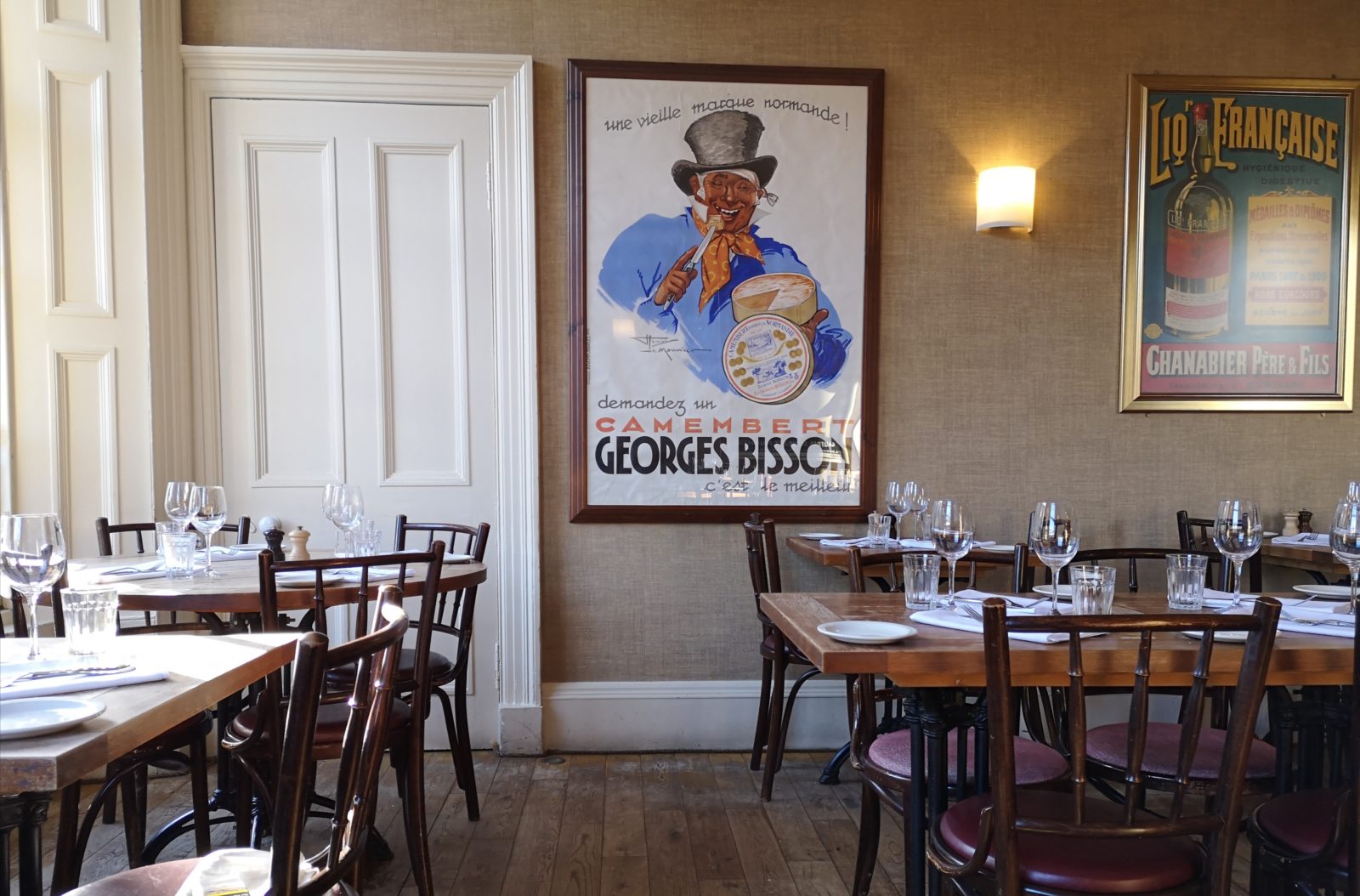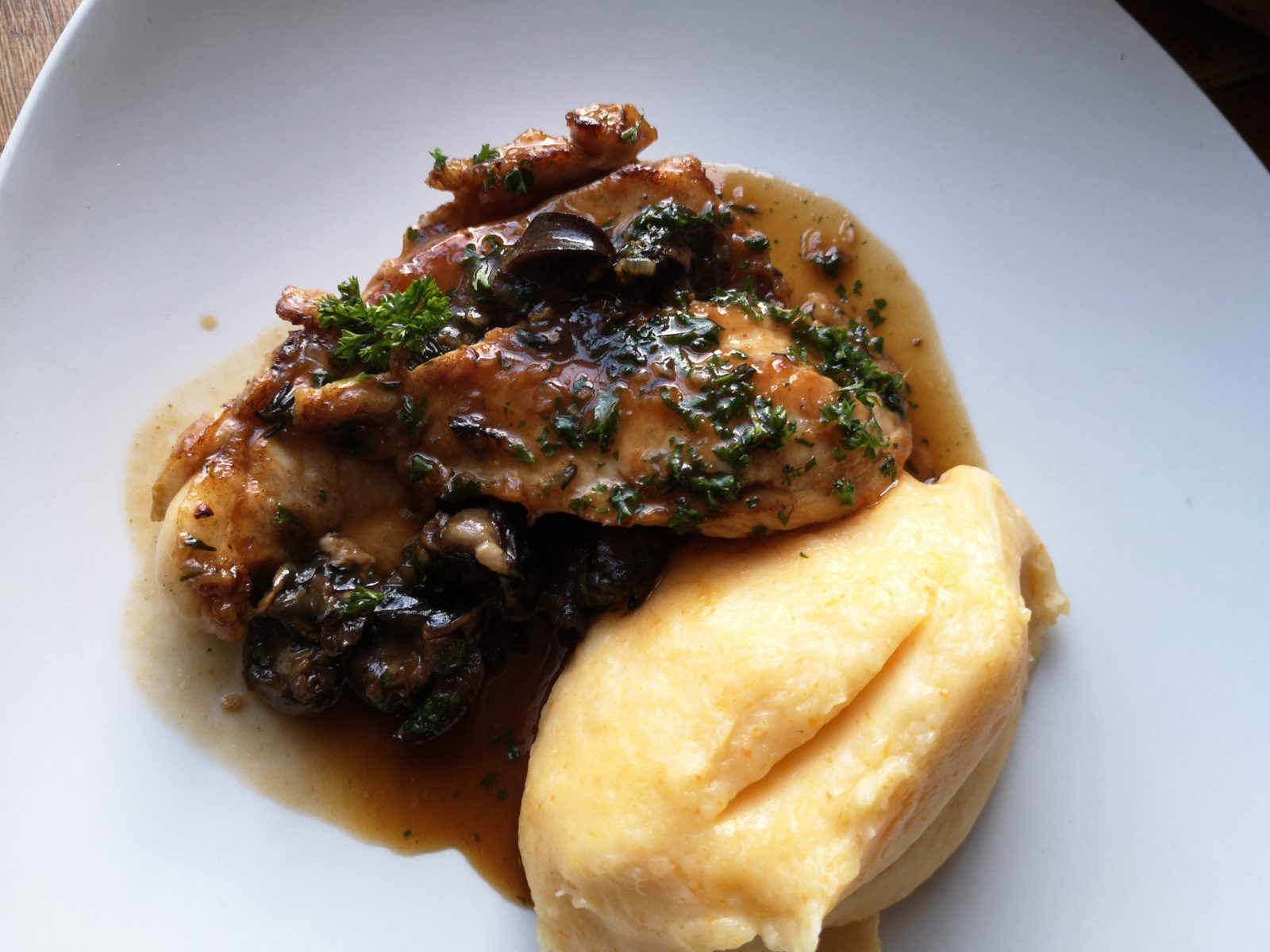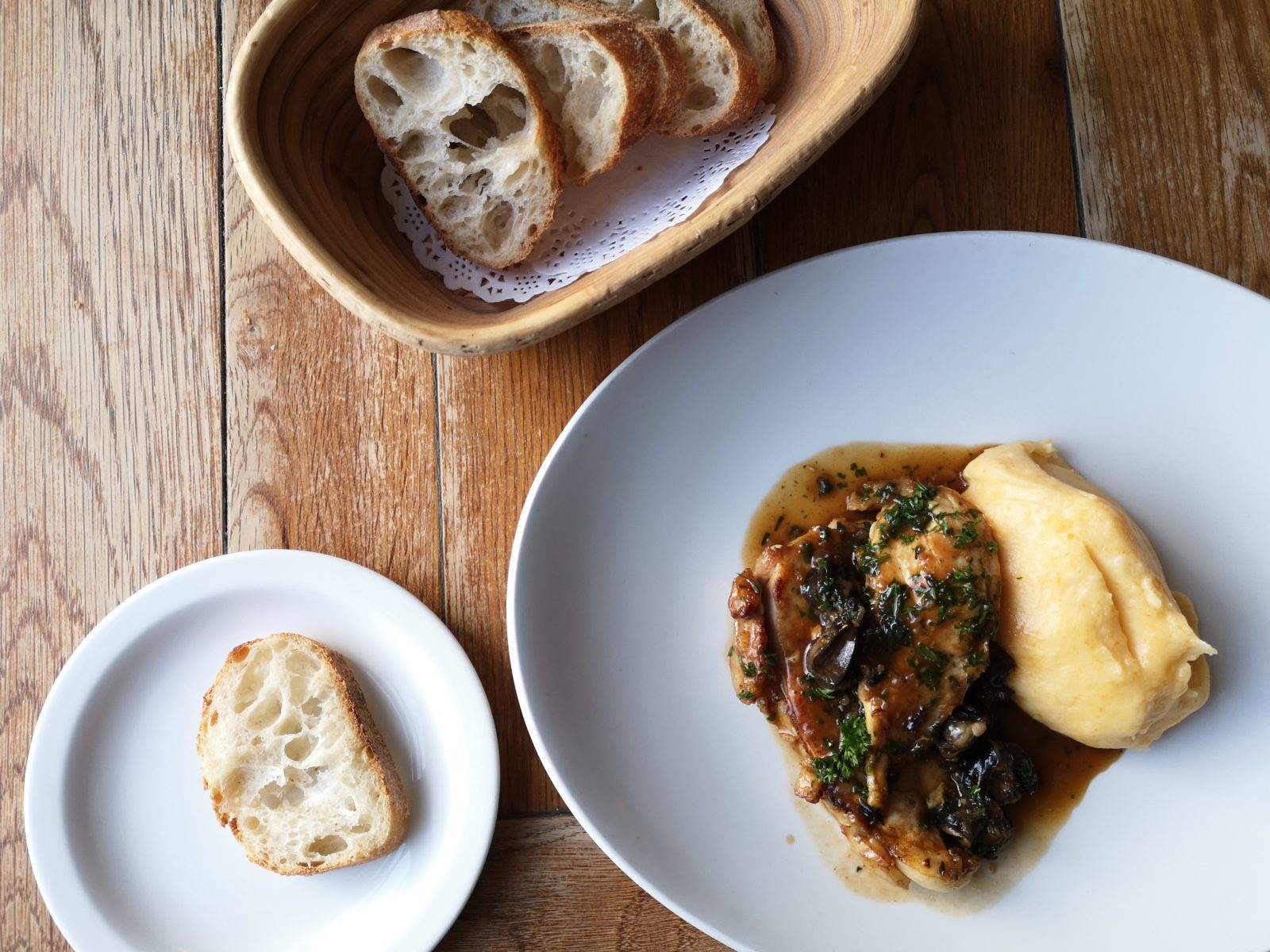This year sees Edinburgh restaurateur and chef Fred Berkmiller turning 50 years old and he admits reaching this milestone has caused him to pause and take stock.
“What do I want? Do I want to be in catering? Big questions.”
It's therefore, the perfect time to reflect on what he and his partner Betty have achieved over the years, here in Scotland.
They first opened Petit Paris in the Grassmarket in 1998 then a second west-end restaurant in 2004 which morphed into what is now L'escargot blanc and L'escargot bleu on Broughton Street in 2009.
So how does he intend to celebrate his big day?
“The same as every year, socializing cooking and drinking. We have an old school house, at our home in France with a huge oven but no electricity, so candles for lights. We cook on a barbecue or in the oven, that is all we do.”
Food for thought
A constant theme for Fred is his ethos that good food is central to our society, and should be accessible to all.
“We all need to learn where our food comes from, we are gradually coming to this way of thinking again,” he explains.
“I cook for 800-900 people a week but in principle, it is the same for buying for a family of four, nose to tail.”
Fred explains that when you sit around a table and eat “you open minds onto the world".
He said: "It is where your children have their first taste of pancake or chocolate tarte. A place where you can discuss homework, boundaries with your kids, exchange ideas.”

Interior at L'Escargot blanc, Edinburgh
In the beginning
Fred was born and brought up in Tours, France, he recalls: “I am one of five kids, where food was at the heart of the family, we were surrounded by foraging or neighbours swapping vegetables, yeah I guess a happy childhood.
“My grandmother making jelly in autumn and holidays meant shellfish found on the beach; cockles and winkles.”
However, he explains: “I didn't get on at school I was a bad boy, expelled 3 or 4 times.”
Exasperated, his mum came up with a plan, that he should work instead. She found a chef who would take him on and dropped him off mid-week to collect him again on Sunday.
“I was 14, I hated it. There were four or five apprentices we slept in a room above the restaurant. The food was very traditional, and the boss was a bully. I washed up, peeled, chopped and cut up all sorts of vegetables, plus basic mise en place.
"I was taken to the garden to pick vegetables, and I learned how to slaughter and butcher animals like chickens, ducks and rabbits as well as preparing snails and game. In those days everything, including putting wine into bottles or curing ham, was done in house.
"It was one of toughest jobs I’ve ever had, but I recognise the value of it today. Now I would love it.”
After two years, it was decided it would probably be best if he didn't come back.

Butchery was one of the many skills he learned as an apprentice.
Again his mum found him another job, this time in a Michelin starred restaurant, closer to home.
“It was supposed to be two weeks at work, then one-week college. There were two chefs, the old one was really something, he would call out two names from the apprentices and tell us to follow his instruction.
He spoke quietly, no stress, no anxiety, I made things I had never made before froie gras, scallops, lobster. Things I had never seen before.
“I was meant to be learning English, but I never went, one day my tutor arrived and introduced herself, somehow she let me earn my qualification. I think she understood.”

Fred Berkmiller
After this period, Fred worked in Monaco, and Paris before moving to London. He explains: “It was meant to be only for two weeks I ended up staying for seven years, it felt like it was the start of my life. I enjoyed being a chef, I had learned skills, built on my know-how. I knew what I was doing and got positive feedback.”
“I met Betty in London, she interviewed me for a job. Then we worked together at various Pierre Victoire's throughout the country and in Edinburgh and Glasgow, where our two children, Camille and Mathilde, were born. Eventually, we opened our own place in the Grassmarket, before going on to open L'escargot bleu and then L'escargot blanc.
"Betty is a strong character and a hard worker but like me, she is taking a step away from the front line she takes care of front of house paperwork.
“We have built a good team here, that we trust, Bertrand has worked with me for 20 years and Adam for the past six years, he wants to stay and that is his challenge, he came from Mal Maison and has worked his way up, so I'm not always having to be in the kitchen.”
How does your garden grow?

Grown this season by Fred at Newton the Walled Garden
Fred has another passion, he is happy to admit that “gardening has taken over his life.”
He explains that he has been working hard to bring a beautiful, neglected 1.3-acre walled plot, back into production with the help of the owner Mary Fawdry.
She was a customer who had heard about an education project he was involved with and wanted to see Newton Garden “happily used”.
Fred is now on a mission to have both his restaurants self sufficient in herbs and salad this year, adding wryly, “only now that I garden, do I hate snails. I now throw them over the wall.”
Brexit
As the UK leaves the EU on the 31st of January we tentatively ask this French Scot for his thoughts.
“I have no political standpoint, I don't think the European Union is a good thing but I also don't think Brexit is good either. It was annoying and upsetting to have to apply for the right to stay here, both our kids are Glaswegian, born in Scotland.”
“Our kids have dual nationality and we are looking into full status, we might become British, it might take time. Do I want to be British? I've lived in the UK longer than I lived in France” he ponders.
“Initially the process was confusing it took two evenings online, but once you reread it, and got your documents, proof of address, income council tax and national insurance contributions it was alright.
“I don't know, we just have to deal with what happens, if the price of wine price goes up, our prices have to go up.”

Copper pans bought in 2004 “will still be going strong when I'm under the ground” says Fred
Rabbit
Fred joints the whole rabbit carcass into pieces, first removing the head, then we would have traditionally coated the meat pieces in flour but now we don't he explains, “as we make the sauces gluten-free wherever possible.”
When asked further about dietary requirements, Fred explains: “I might not agree with vegetarians or vegans, but we have to respect people's choices, as a hospitality business we have a duty to serve and supply what they want.”
The rabbit sections are all seared in cast iron skillet, and left to braise until golden in butter. Fred says: “This part takes time. A good chef is the one who takes the time, to guarantee the end result is good.”
While this happens Fred finely chops onion, carrots, diced celery and five cloves of fresh garlic, once the rabbit is browned it is set aside to rest. The excess rabbit fat is drained before the vegetables start to sweat off with sizzling butter.
The head is returned to cook for longer with the diced vegetables. A bouquet garni which has been made in advance is added; bay leaves, chervil or parsley stalks wrapped up in a tidy parcel of leek tightly trussed up with string.
Then a mixture of beef and chicken stock are added and it cooks again, adding an extra bay leaf in for good luck before being sieved.
Fred then finds a copper pan and places two rabbit legs, some cooking liquor and pre-cooked heritage potatoes, pink fir apple and a purple variety. He brings this up to temperature before adding a good handful of chopped parsley. At this point Fred explains, is where the creativity and emotion of the chef is added to the dish.
He decides this time to add preserved prunes to increase the intensity of the dish. Again more butter is added - as Fred says, “you can never have too much butter.”
The preserve is pre-made from, sugar, tea, Armagnac socked with dried prunes and vanilla pods. Plate up, and serve on a simple white dish.

Cockerel

Le coq served with l'escargot sauce
The large carcass is divided and the breast meat taken off, cut into escalopes with a thickness of about 1 cm. The rest of the fowl is then be slowly marinated, in three litres of red wine, with vegetables and will then be turned into a coq au vin.
Fred then adds butter to a hot pan waiting for it to turn brown before adding a couple of cloves of garlic, which he bashes on the counter with his hand. He then carefully places the three pieces of meat to cook, along with thyme salt and a sprinkle of black pepper.
Once it is cooked until golden it rests, Fred adds finely chopped onion to the pan and the snails to start to make the sauce.
“We normally get them from Barra, when they are in season, March to December, so I'm not going to lie, today I'm using French ones.”
He then adds the gelatinous beef stock adding, “the better your stock, the better the taste, the more the love you put into it, the better the results".
"You see people cooking for 10 seconds, so my type of cooking has almost disappeared,” he says before he adds a ladle of chicken stock into our dish. A little dash of Armagnac, before covering the meat with the lid on to allow it to cook and blend into the escargot sauce mix.
He then asks for some potato and carrot mash to be warmed with milk.
“In the kitchen I can ask and things happen whilst in the garden, I'm on my own,” he chuckles.
He adds a final piece of butter to the sauce which is finished on low heat, and a good handful chopped parsley.
“I love butter you can never have enough.”

Le coq served with mashed heritage potatoes
The verdict
Le Lapin
The star of this dish is the tender meat, which is moist and flavoursome, the balanced sauce has complex notes, but you can identify the depth and tone of the beef, the mid notes of chicken stock but the high point delivered by the magic ingredient, the sweet prunes.
A dash of fresh parsley and the warmed heritage potatoes including pink fir apples were delicious.
Le Coq
The elongated tender texture of the cockerel makes for a slightly more robust taste than chicken, but it is undervalued meat. The Escalopes are covered in a rich shiny sauce. Snail a new taste sensation for me is unexpectedly good, the classic French culinary flavour boosted by time spent simmering in the stock.
A serving of potato and carrot mash, smooth and soft as a pillow, the perfect accompaniment.
Thinly sliced baguette on hand to mop up every morsel, c'est magnifique.
Under the grill: Quick Q & A with Fred
Describe your cooking style? and why are you passionate about it? Traditional, French-inspired fusion etc.
“Being French-born and bred, and having been trained from an early age in France, I definitely received a classical influence and a reflects the era from the 70 and 80s.
"So long hours making basic stocks to enhance flavours using a slow cooking style, and using mainly terroir provenance ingredients.”
What was your first job in the industry? Plus where were you before?
“I started at the early age of 14 as a pre-apprentice in a Routier restaurant in St Maure de Touraine where I worked for two years and learned all the basics of cooking. I then moved on to the second part of my training at a Michelin-starred restaurant in Tours, and graduated as a chef two years later. This was more of a fine-dining place, or Nouveau Cuisine as it was called.
"Making foie gras and turning vegetables, including mushrooms, was a daily task. I then had a trip to Monaco with Roger Verger, and a few months working in Paris before heading to London in late 1988. I never went back to France.”
Favourite spice? And what dish/recipe would you suggest using it in?
“Definitely, we call then the four epices (4 mixed spices). It’s a must in classic French cooking made of ground nutmeg, black pepper, ginger and cinnamon.”
Are you sweet or sour? So is it all peace and harmony in your kitchen or do the pots and pans fly? What little things annoy you?
“I am neither sweet nor sour. Knowledge and willingness are compulsory in our kitchens. No violence or shouting is allowed, and flying pans are banned! These types of attitudes usually reflect lack of experience or the super-inflated ego of the head chef.
"A dirty pass is very annoying, so clear communication skills are needed.”
What is popular in your kitchen right now?
“I don't really have a flavour of the moment. I tend to follow the seasons and I am always communicating with my suppliers who are also good friends.
"This dictates what is happening on the menu and what I will buy and cook, but my mood and the weather also has a strong influence on my cooking.”
Tea or Coffee? Is it Darjeeling darling or bitter Colombian? What's your brew and how you like to drink it? Camomile, Milky brew or builders elaborate, please?
“Breakfast tea for me all day, two sugars and milk. I used to be a heavy coffee drinker, but that all stopped when the smoking ban came in. I realised I was drinking coffee so I could have a fag.”
Everyone has one at least one guilty food pleasure, so what do you love but are too embarrassed to admit?
“Bread and butter and a tin of Buitoni beef ravioli. The worst thing anyone should eat really, but once in a while it's needed!”
Who is your favourite chef? Plus everyone has a food hero/ local supplier, who is yours and why?
“I cannot possibly come up with a favourite chef. In today's world, the terms humility and modesty seem to disappear, which sadly disintegrates the meaning of cooking from the heart. I could mention a hundred chefs and food heroes.”
Fantasy dinner party guests? and what would you cook for them?
“I don't really do fantasy. Life is too short and I try my hardest to take any opportunity to cook and socialise as much as I can in a realistic way. Therefore I live my dream on a daily basis! ”
I don't like...or I'd rather not eat......
“Bananas definitely and even just the smell of melon makes me run away, my brain brings back unwanted memories!”

17 Queensferry Street
Edinburgh EH2 4QW
(0131 226 1890)
In the Kitchen: Andy Keir from Damm27 restaurant, Causewayside, Edinburgh
In the Kitchen: Phil White from LeftField restaurant, Bruntsfield, Edinburgh